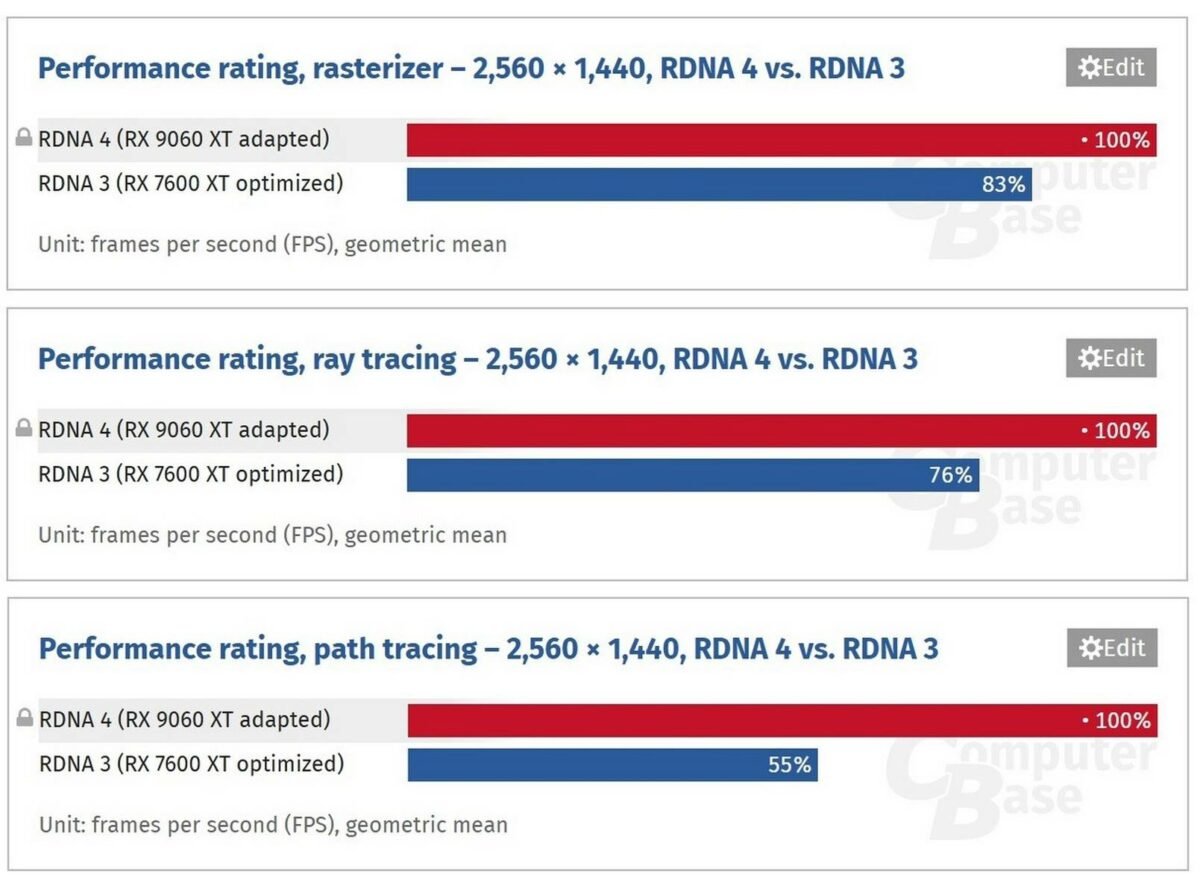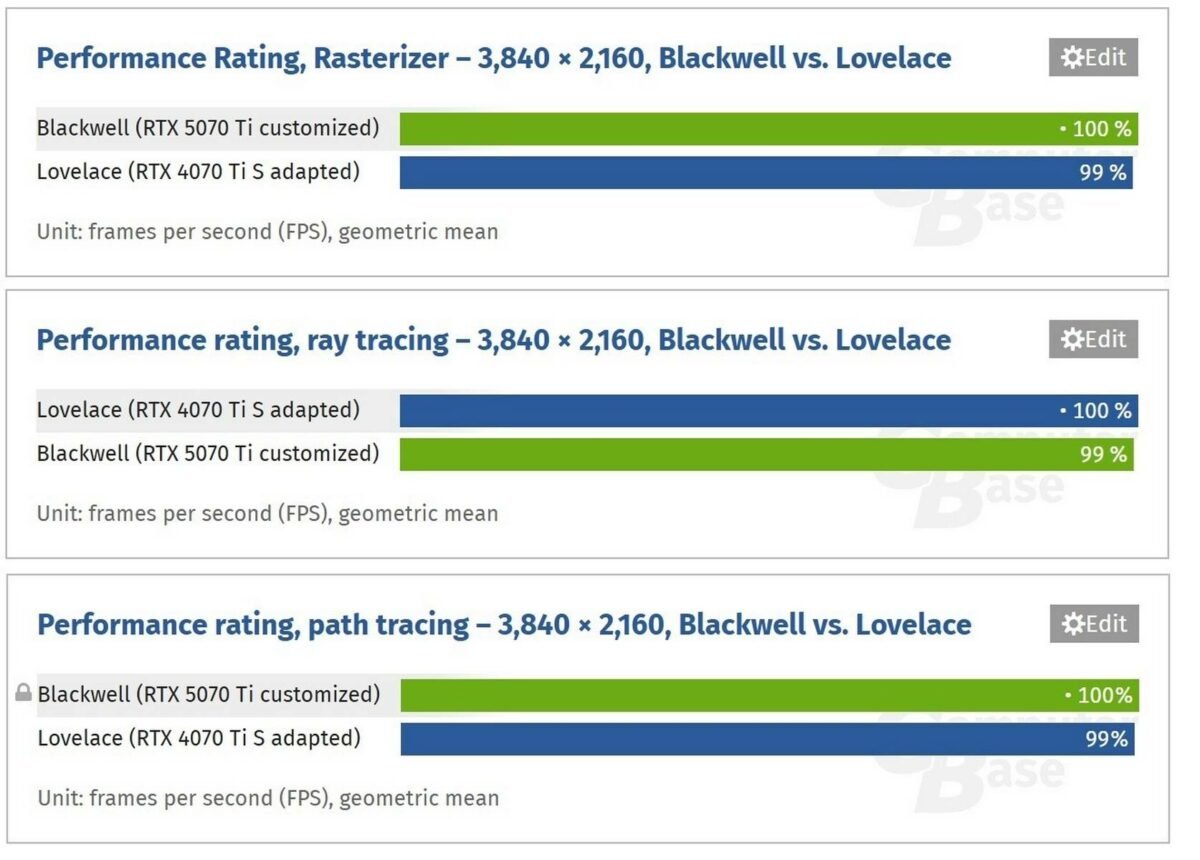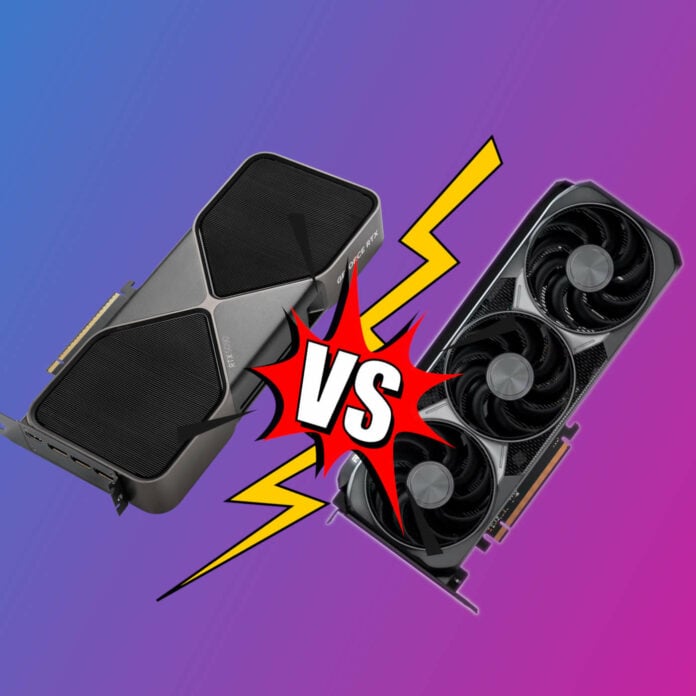Though Blackwell may wear the performance crown, it’s widely understood that Nvidia’s latest GPU architecture isn’t a massive leap over its prior offerings. Investigations into IPC indicate as such, but illustrate just how much of a leap RDNA 4 is over its predecessor.
To measure the architectural improvements of current-gen hardware, folks at ComputerBase took four mid-range GPUs from AMD and Nvidia, two from current generation offerings and another two from the prior. On the AMD side, RX 9060 XT and RX 7600 XT respectively represent RDNA 4 and RDNA 3, while RTX 5070 Ti and RTX 4070 Ti Super represent Nvidia Blackwell and Ada Lovelace.
To make sure the tests are as apples-to-apples as possible, ComputerBase tried as much as possible to align the specs of each brand’s card to make the design improvements stand out. This includes getting the frequency, memory bandwidth, and shader counts as close as possible, in the hope of shedding light on Blackwell and RDNA 4 IPC uplifts compared to their predecessors.

In rasterised rendering across 19 games, AMD’s RDNA 4 exhibited a substantial IPC leap, reaching up to 20% compared to RDNA 3. In contrast, Nvidia’s Blackwell delivered a mere 1% improvement. The same goes for ray-traced workloads, where RDNA 4 boasts about 31% performance against its predecessor, while Nvidia’s Blackwell remains at 1%. Path tracing saw an even larger difference, with RDNA 4 blasting past RDNA 3, offering nearly double the performance, where once again, Blackwell stays at 1% ahead of Ada.

From this data, it seems like much of GeForce RTX 50 Series’ performance uplifts stem from an increase in subcomponents. Transistors, CUDA cores, RT cores, and more are generally greater in number on Blackwell than they are Lovelace. That’s not forgetting boosts to power draw and frequencies.
AMD, on the other hand, has provided a demonstrably superior architecture. It truly is a shame that Radeon didn’t scale up to the high-end. Here’s hoping that changes with the next generation of graphics cards.


